
On Patrol
ON PATROL
CAMBODIA
WILDLIFE ALLIANCE | CARDAMOM FOREST
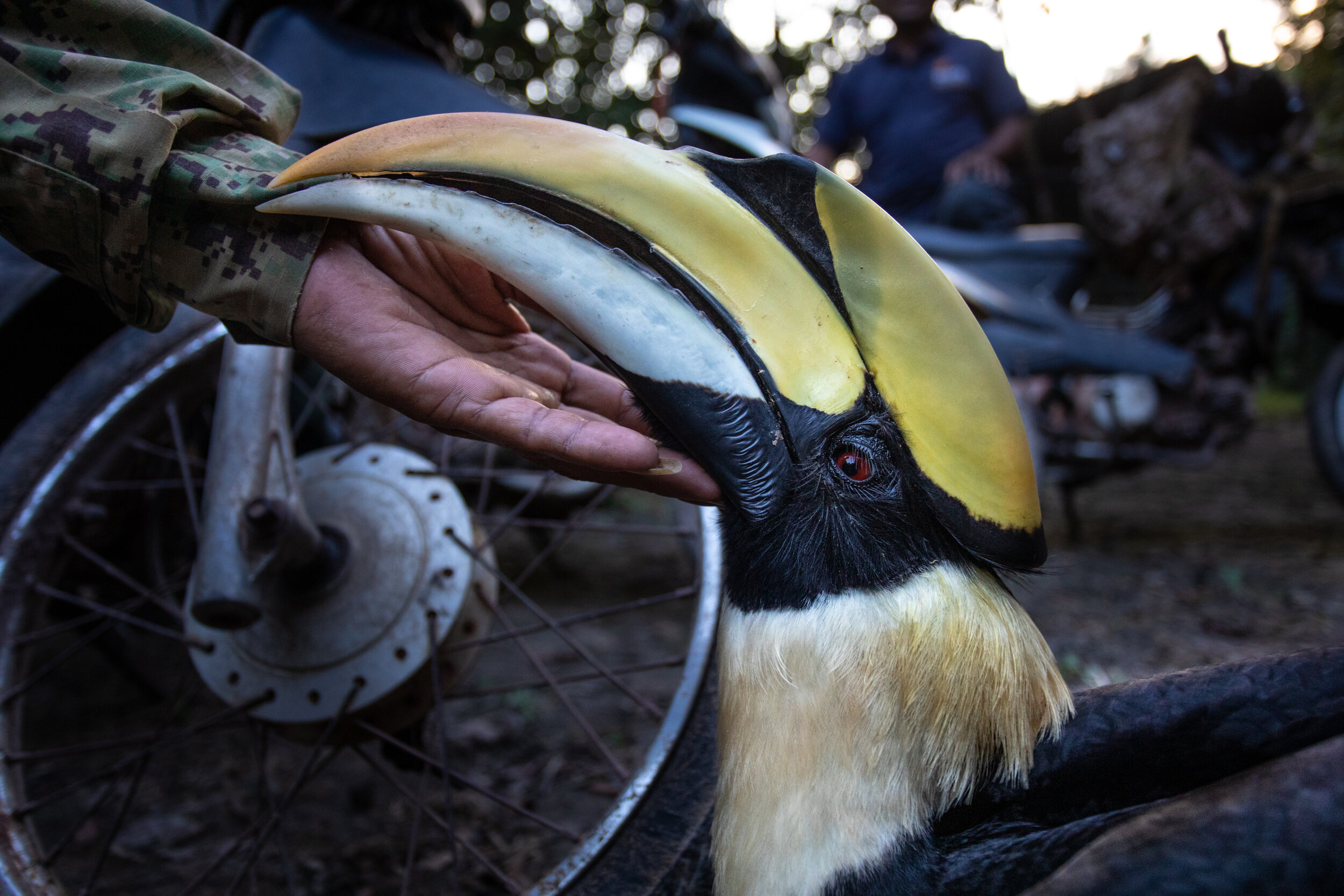
A Wildlife Alliance ranger plays with Joa, a great hornbill that was rescued as a chick in 2016. Joa is now released into the wild but his diet is supplemented by Wildlife Alliance keepers at the Wildlife Release Station located deep in the Cardamom Forest, Cambodia. This slow rehabilitation process ensures the animals remain healthy and fit as they transition into living in the wild.
Wildlife Alliance has rescued, rehabilitated and released thousands of animals including pangolins, leopard cats, and slow loris. Most of the animals were rescued from illegal wildlife trade, a $20 billion a year industry and one of the greatest threats to biodiversity on the planet.
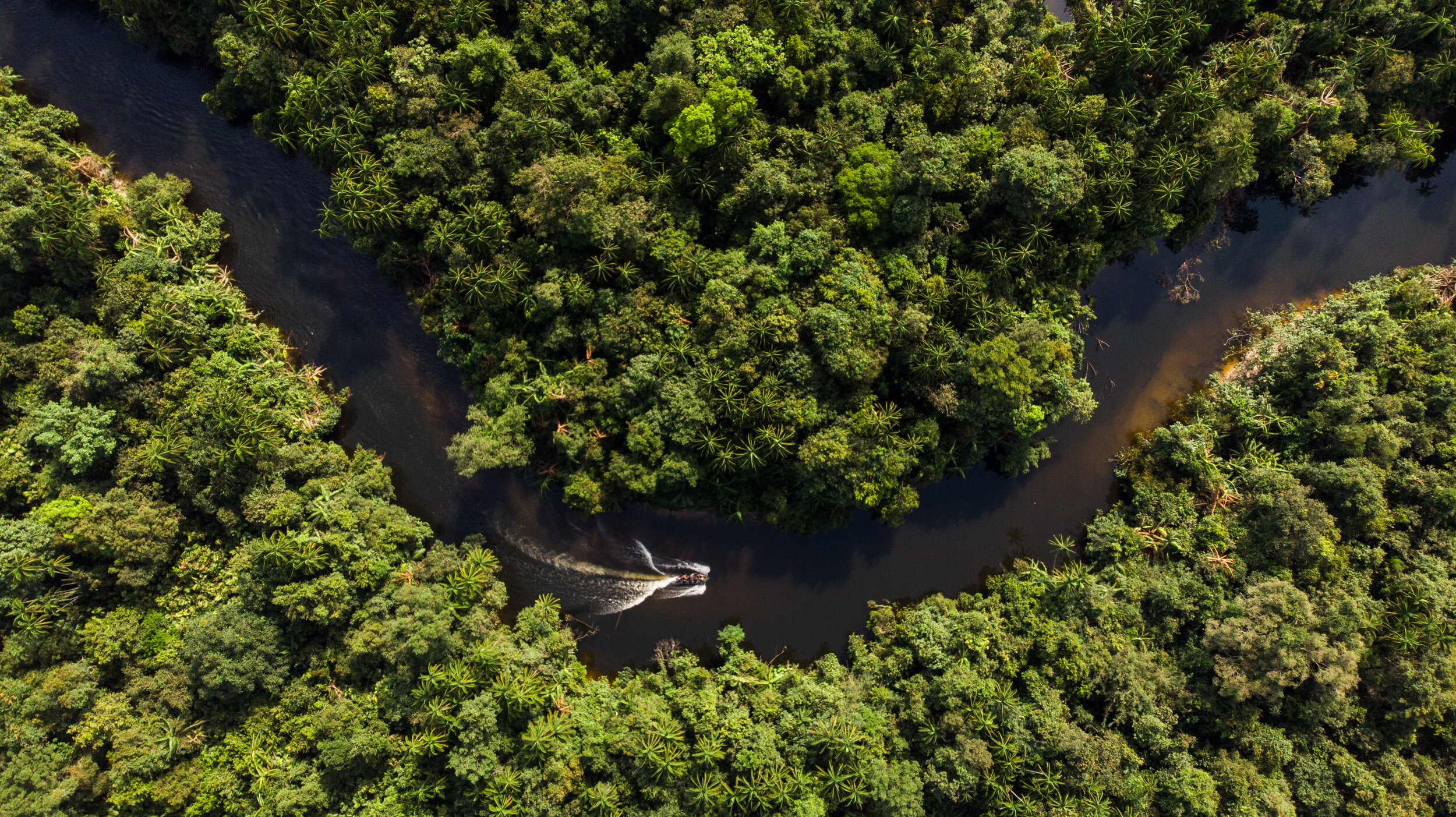
An aerial view of Wildlife Alliance rangers on the Preak Stung Proat river as they head by boat to the starting point of their overnight long patrol, deep inside the Cardamom Forest. Their objective is to trek through the forest back to their station to look for snares and poacher camps along known illegal hunting trails. The rangers are the first line of defense against poaching and wildlife trade. They play a critical role in disrupting and dissuading illegal activity that would otherwise run rampant in the region.
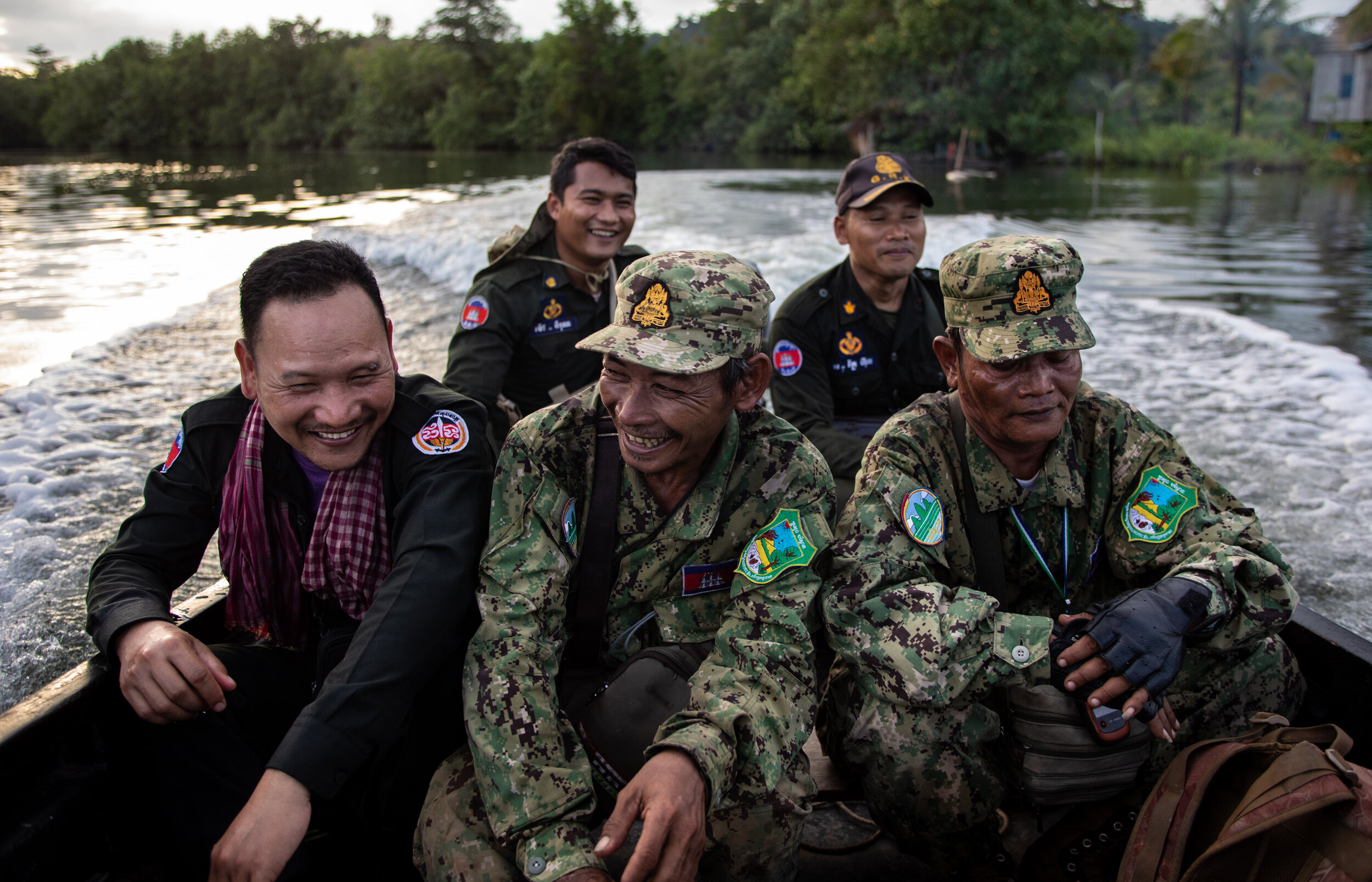
Wildlife Alliance rangers head back to their station after a full day of patrolling in the Cardamom Forest in search of suspected illegal logging.
Wildlife Alliance manages 8 ranger stations with an average of 8,000 patrols covering 119,552 km each year. These rangers have the responsibility of arresting poachers, dismantling illegal logging equipment and snares inside protected forest, and prohibiting people from grabbing protected forest land for their private property.
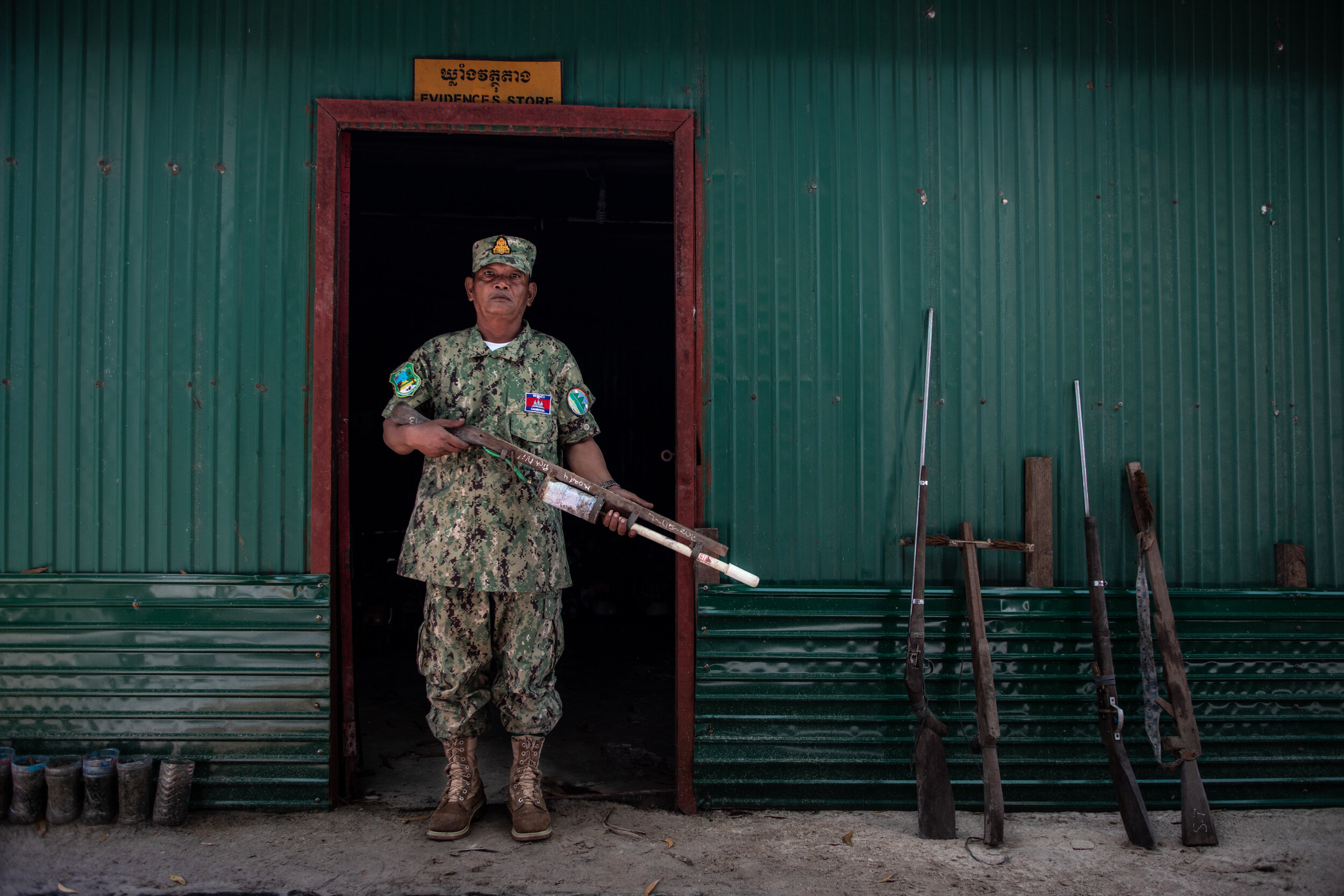
Ranger So Sokun, 57, shows some examples of the confiscated homemade hunting weapons used by poachers in the Cardamon Forrest. They range from old fashioned gun-powder muskets to hand-pumped air rifles and crossbow slingshots. The rangers confiscate thousands of illegal tools each year, from these homemade guns to chainsaws and tractors.
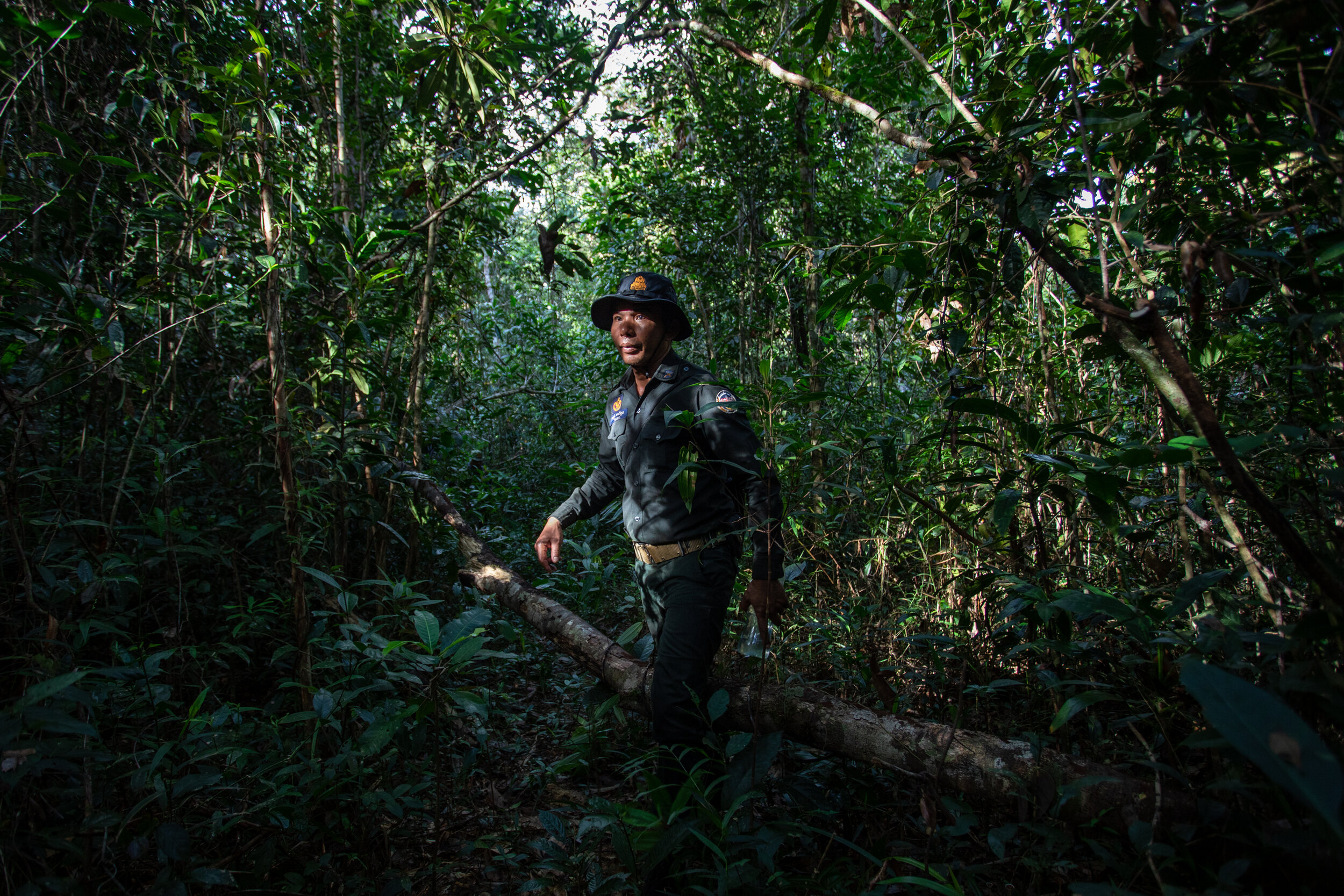
Ranger San Salem, 42, on a foot patrol deep inside the Cardamom Forest. This day's mission was tracking fresh signs of illegal loggers. While moving quickly through the forest, the patrol kept silent, listening for the sound of chainsaws in the distance. The rangers will notice the slightest broken branch that might indicate a fresh trail the poachers took to find new trees to log.
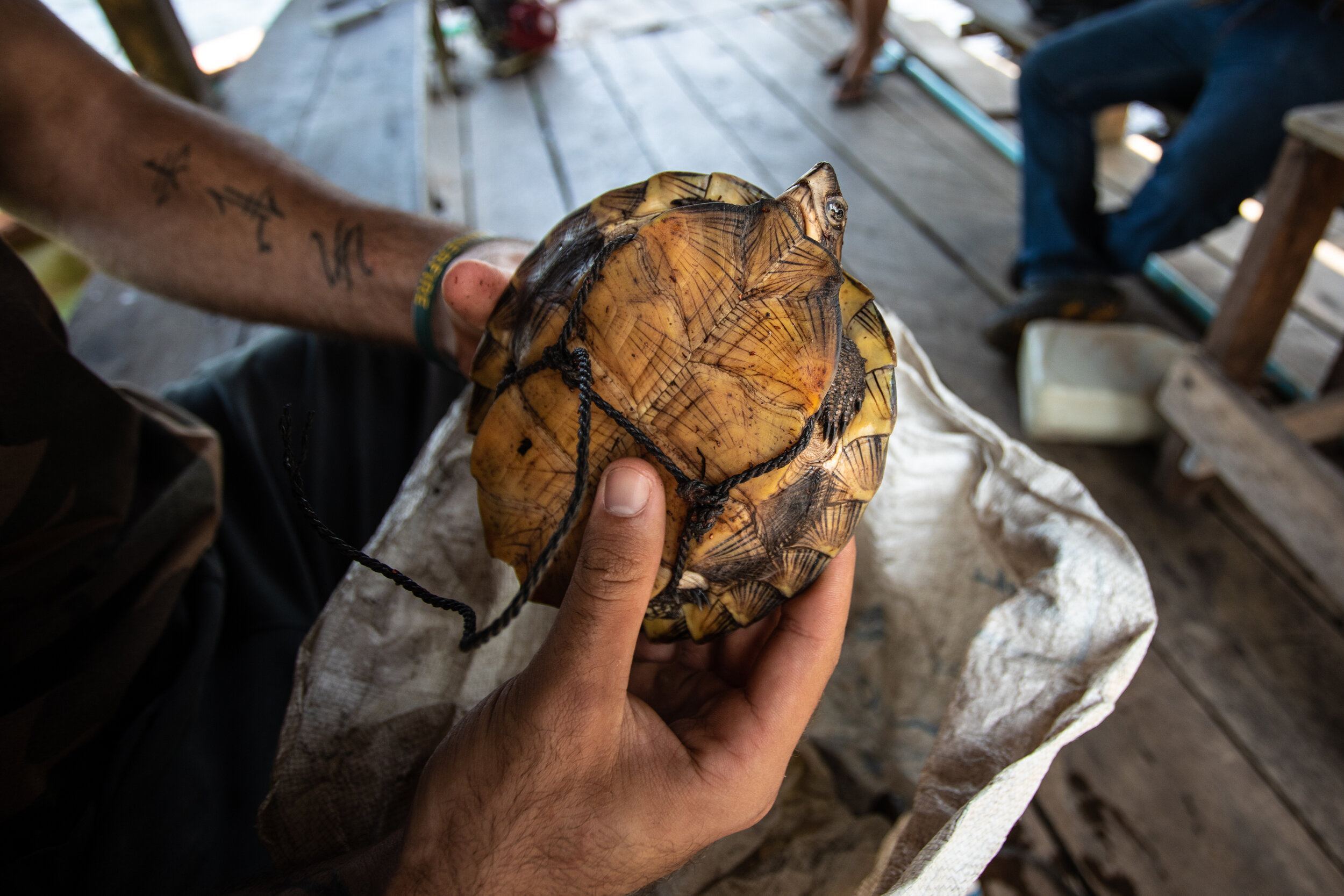
A Wildlife Alliance ranger unties cords on confiscated turtles seized during a standard boat check by a patrol along the Preak Piphot River. The cord is used by the fishermen to carry the turtles around more easily. Typically fishermen stick to fish but catch whatever they might come across that they can either eat or sell.
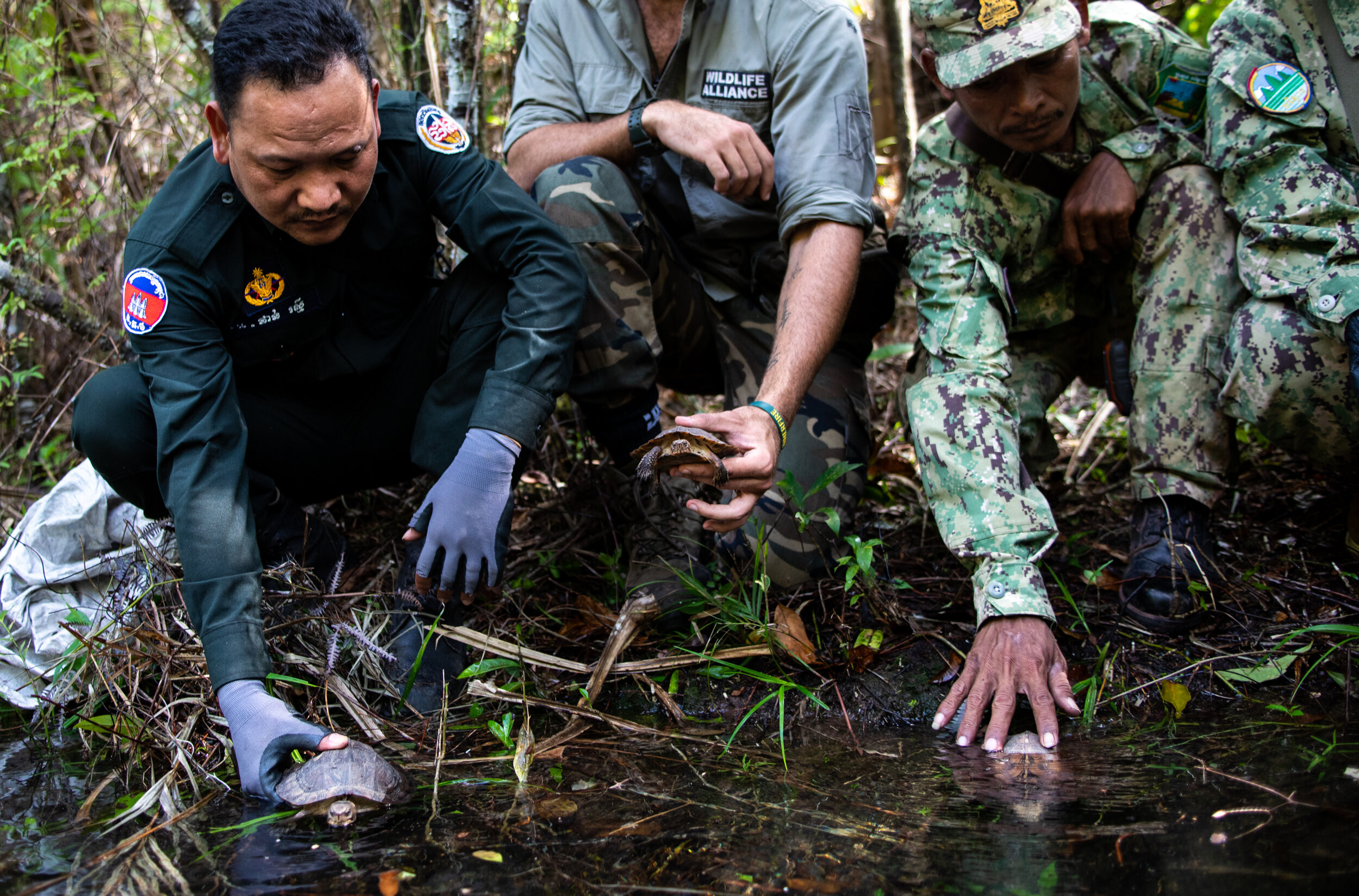
Recently confiscated turtles are released back into the wild in a more protected habitat. Wildlife Alliance releases around 4000 animals a year.
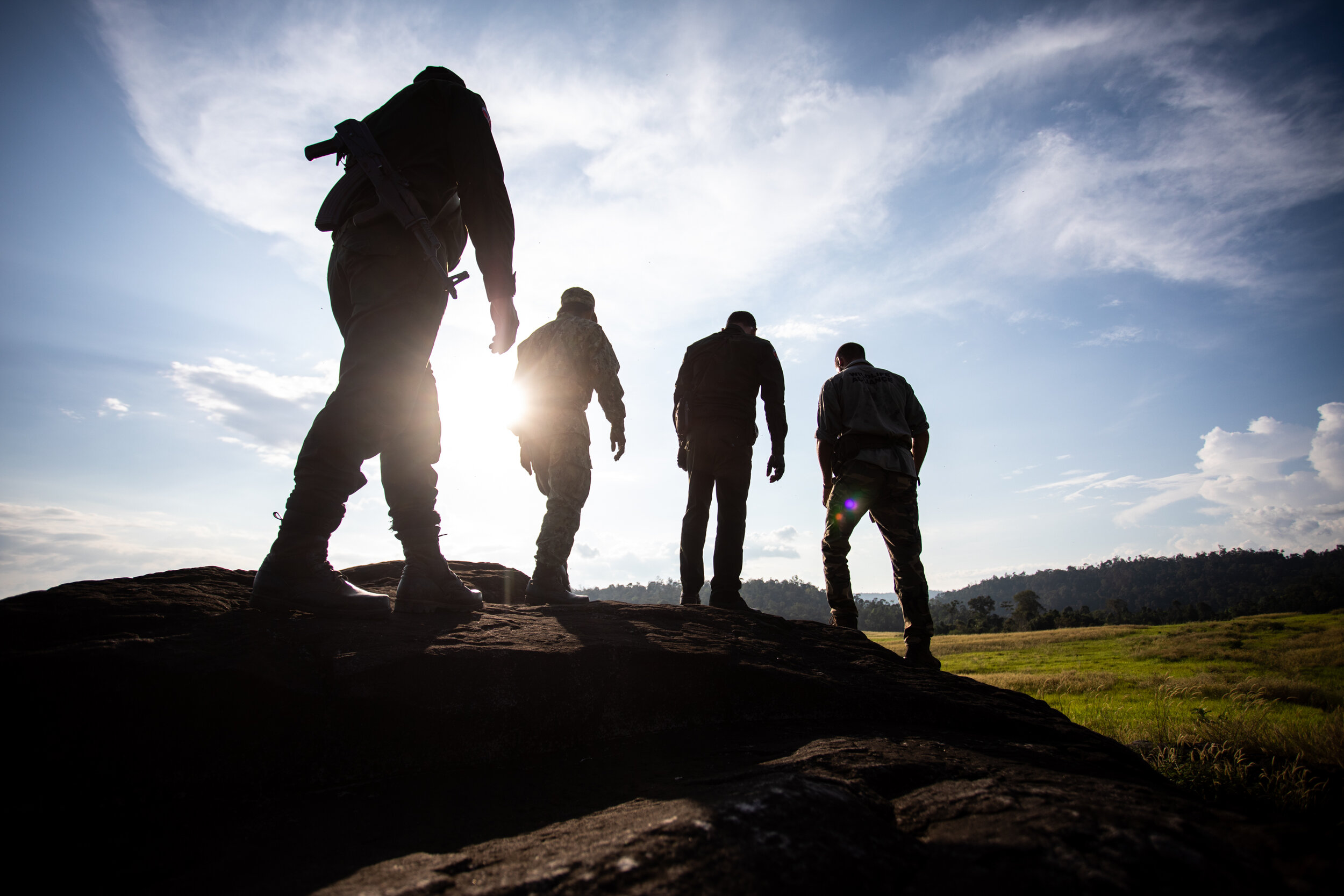
Wildlife Alliance rangers on a foot patrol in the Cardamom Forest in Cambodia. Rangers in Southeast Asia face some of the most dangerous conditions in the world. They are often at risk of attacks from poachers and wildlife alike while spending most of their time in extremely remote areas with little access to medical supplies and equipment.
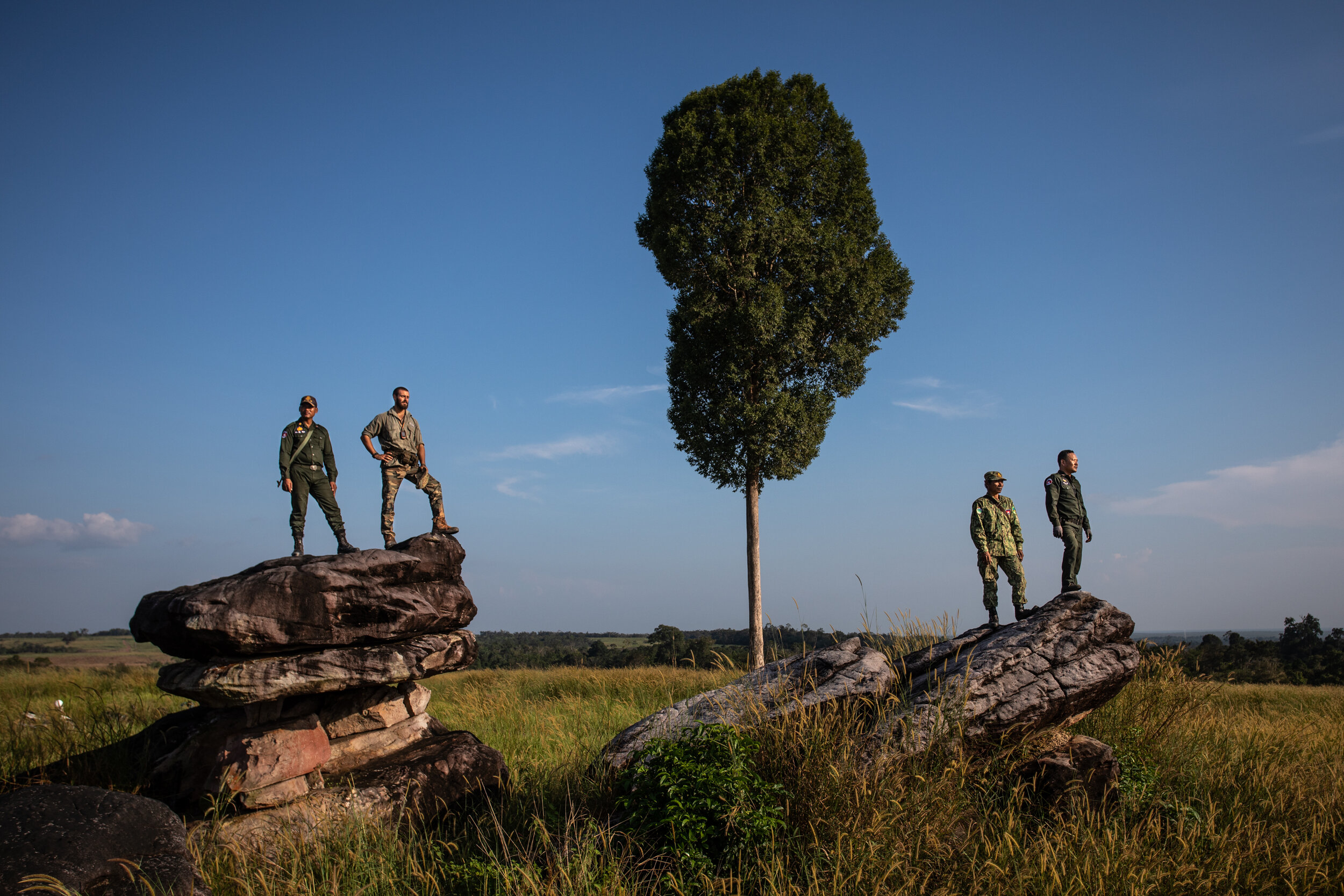
Wildlife Alliance rangers pose for a portrait during a break halfway through a daily patrol.
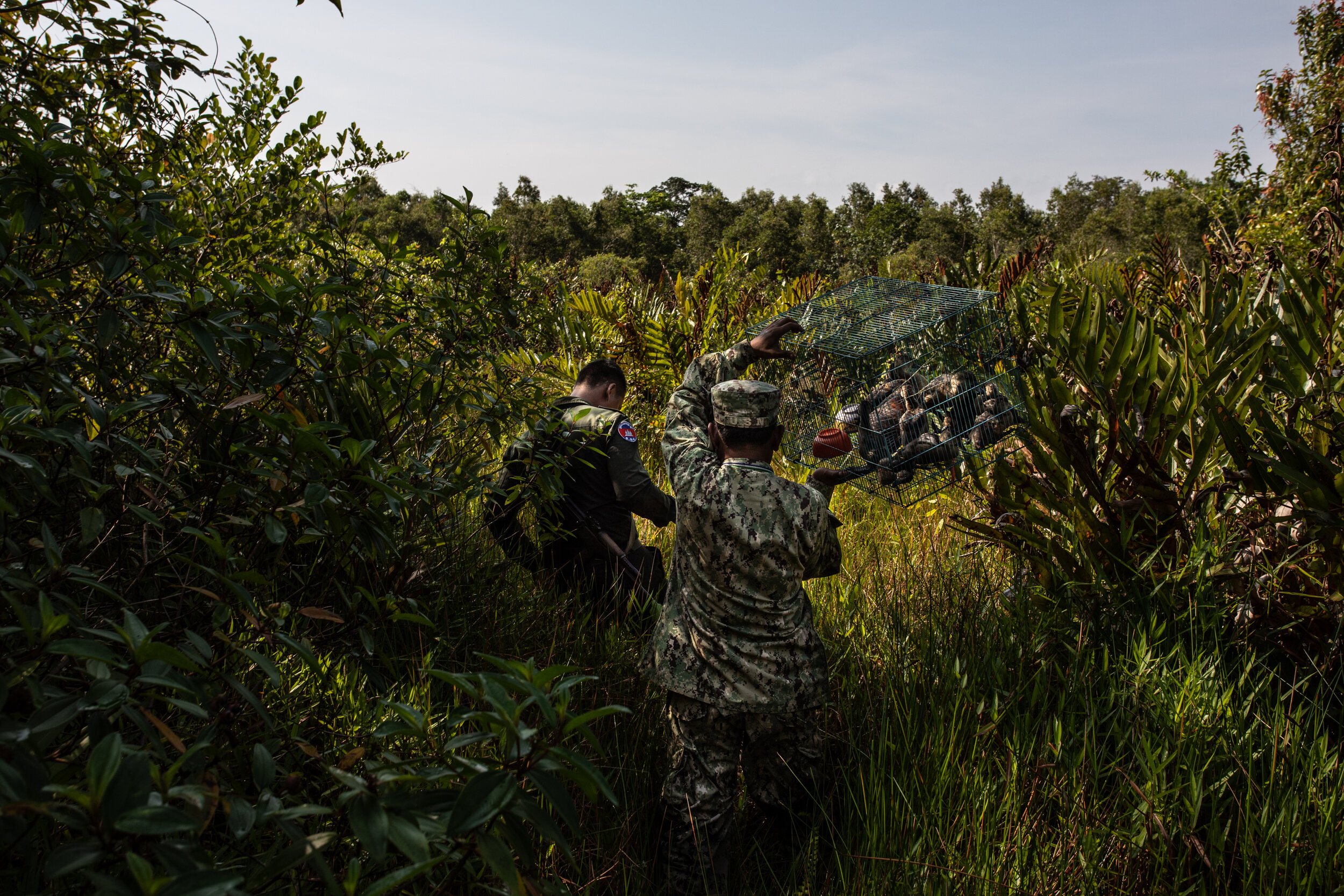
Rangers head to release wild ducks into a protected marsh close to their station.
The ducks were confiscated from fishermen during a river patrol in the Cardamom Forest. The Cardamom Forest landscape is a crucial part of the Indo Burma Hotspot, one of the most biologically important regions in the world and home to many threatened species.

So Sokun releases wild ducks into a protected marsh close to the station.
The ducks were confiscated from fishermen during a river patrol in the Cardamom Forest. This landscape is a crucial part of the Indo Burma Hotspot, one of the most biologically important regions in the world and home to many threatened species.
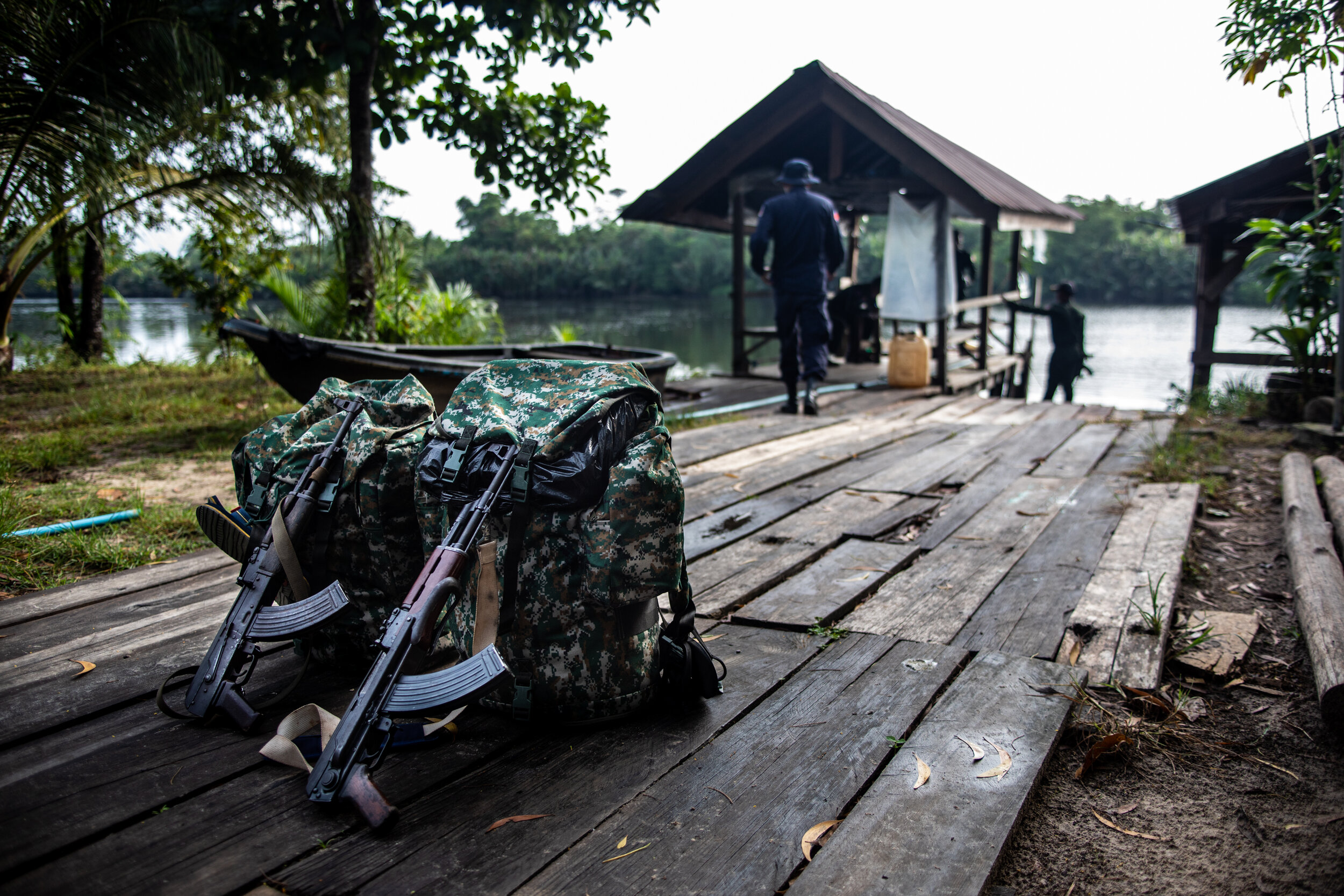
Rangers prepare their 2 day long patrol packs and guns at Stung Proat Station station before putting them in a boat and heading far up river to the drop off point.
The rangers carry the least amount of weight possible for the ease walking off trail through the jungle, with cooking appliances and food dispersed equally among the packs. Space is left to carry confiscated items like snares and poacher camp appliances out of the forest.
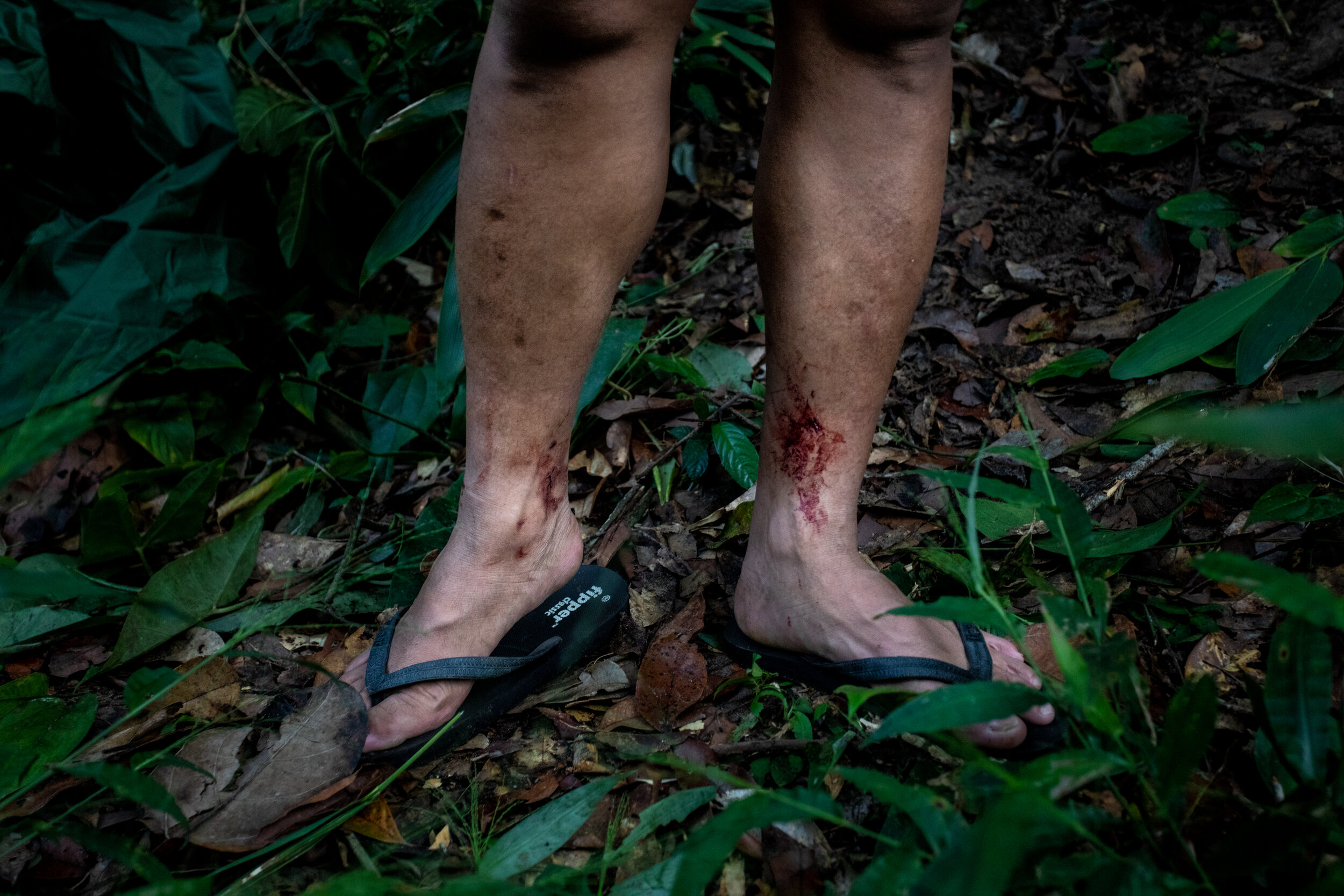
A Wildlife Alliance ranger shows off his still bleeding leech bites after a long day spent dismantling snares in the Cardamom Forest.
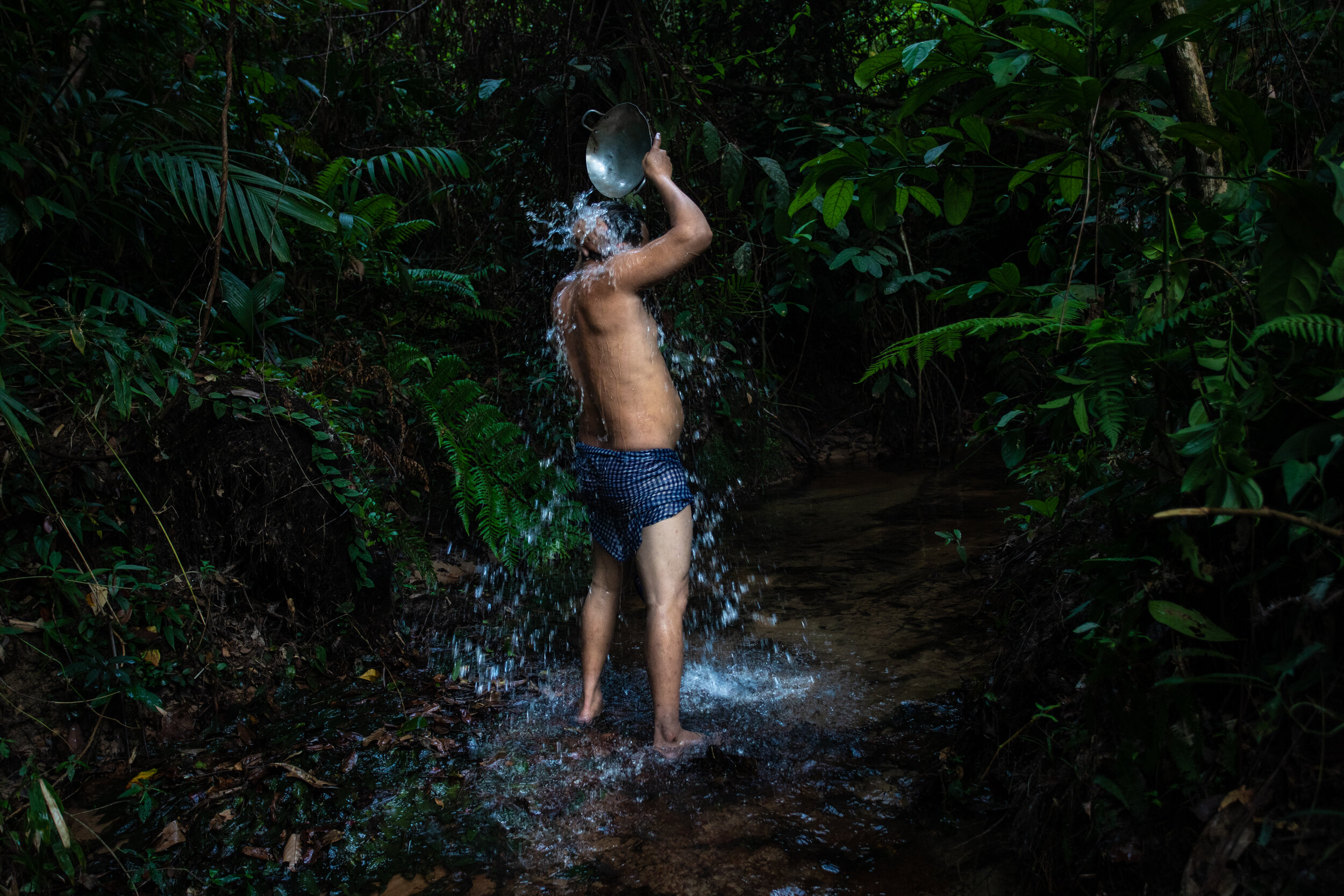
A ranger washes up in a small stream close to camp after the first day of a long patrol.

Long patrol rangers cook dinner at camp after setting up their hammocks and bathing. Patrols can be up to 4 days long trekking deep into the forest.
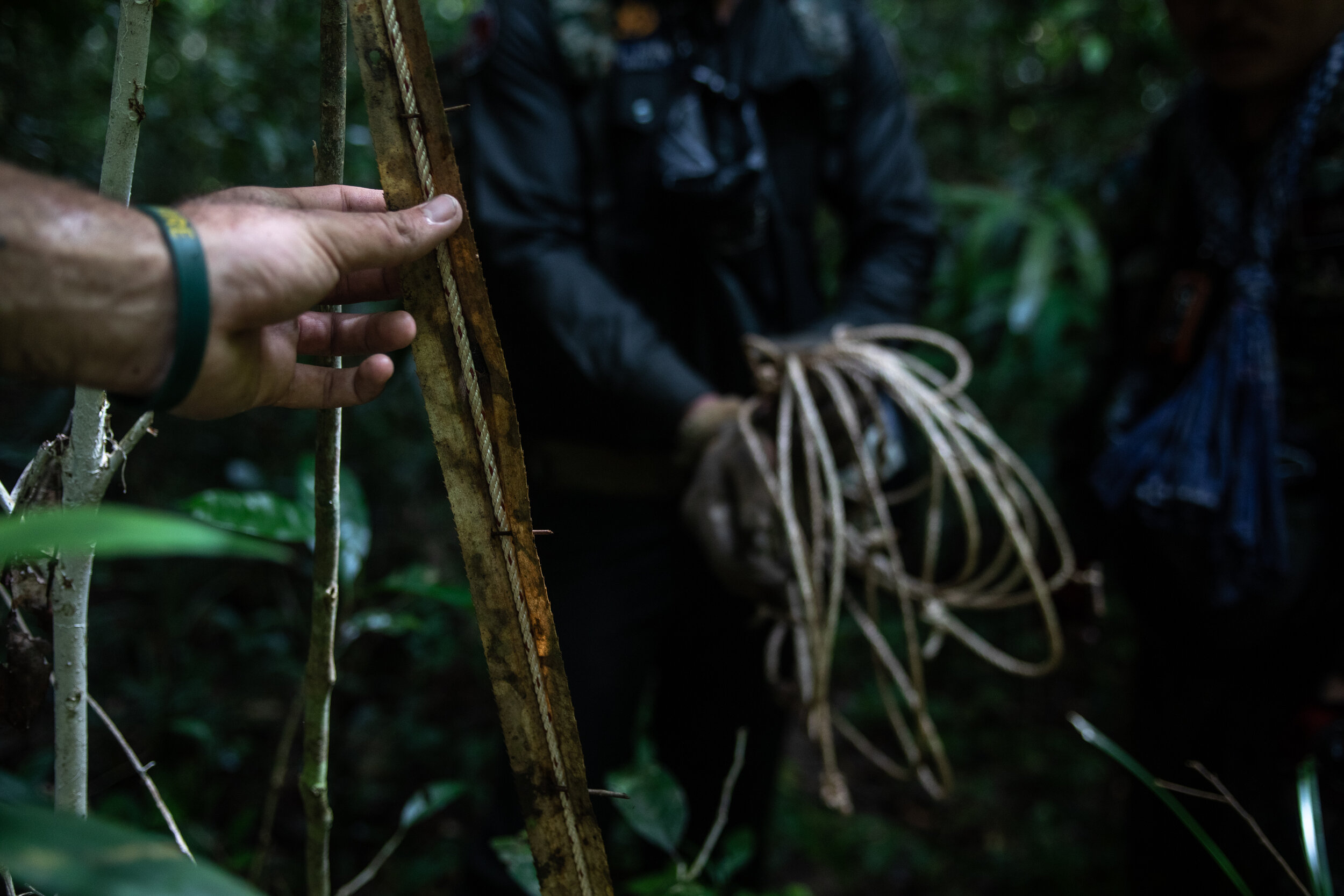
Wildlife Alliance rangers dismantle a snare intricately camouflaged by poachers to hide them from animals and patrols alike. This snare is hidden underneath a long leaf, pinned into shape by thorns from a palm tree. Another method used by poachers is to wrap the snare in a bamboo sheath making it nearly Impossible to see with an untrained eye.
Snares are indiscriminate in what they catch and animals will often suffer for days in excruciating pain trapped in the tightening snare (even attempting to chew off their own leg trying to escape) before the poachers get to them. Sometimes poachers will forget where they put all their snares and rangers will find the long dead animals still trapped, decomposing and pointlessly killed.
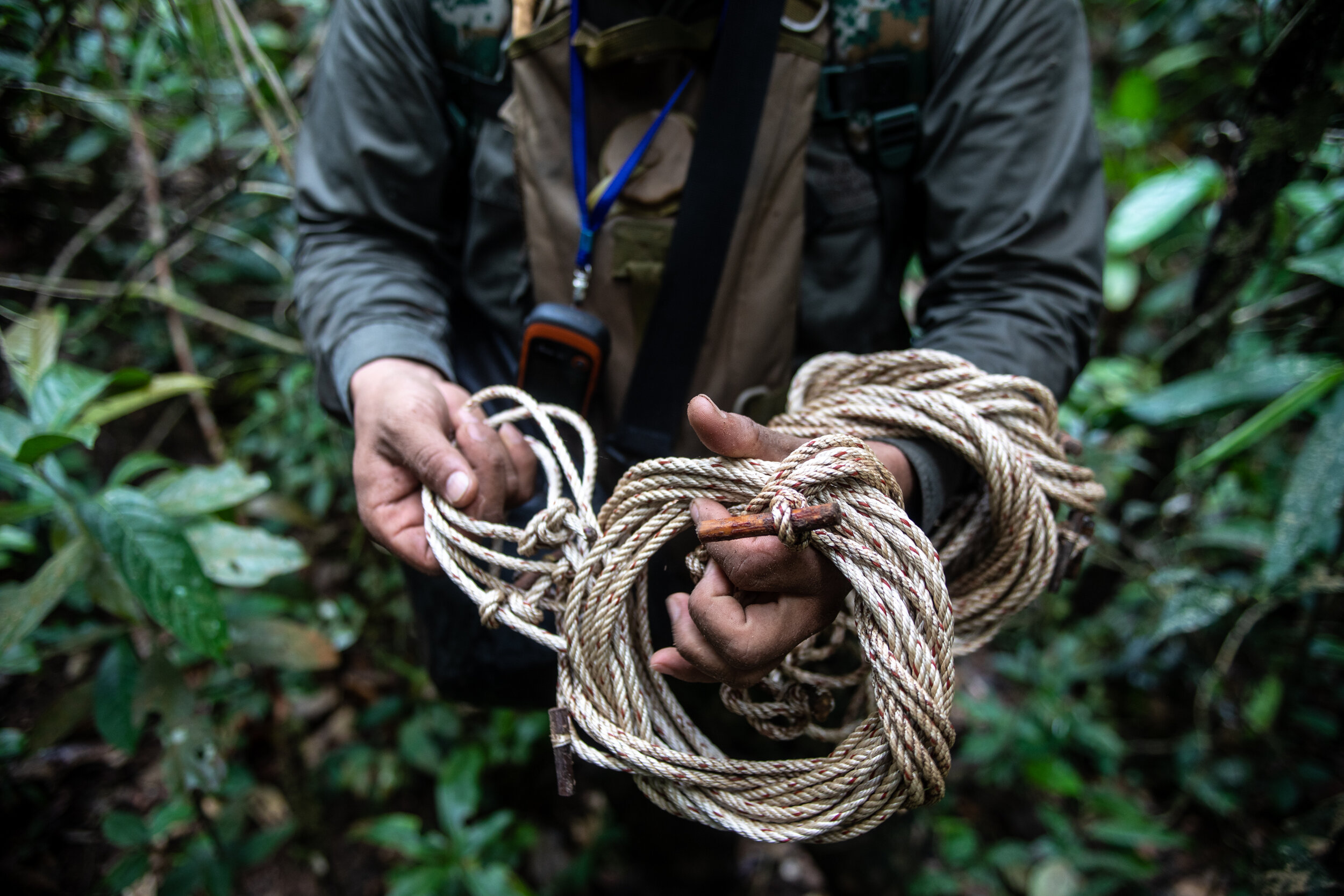
A ranger wraps freshly dismantled snares to be packed up and brought back to the station.
Snares are considered the single greatest threat to ground dwelling wildlife in Southeast Asia. They are extremely cheap and easy for hunters to make; poachers make hundreds to be set in the forest.

Dozens of dismantled snares and monkey nets recovered from a single patrol.
In 2018, Cardamom Forest Rangers removed 19,986 snares from the forest floor.
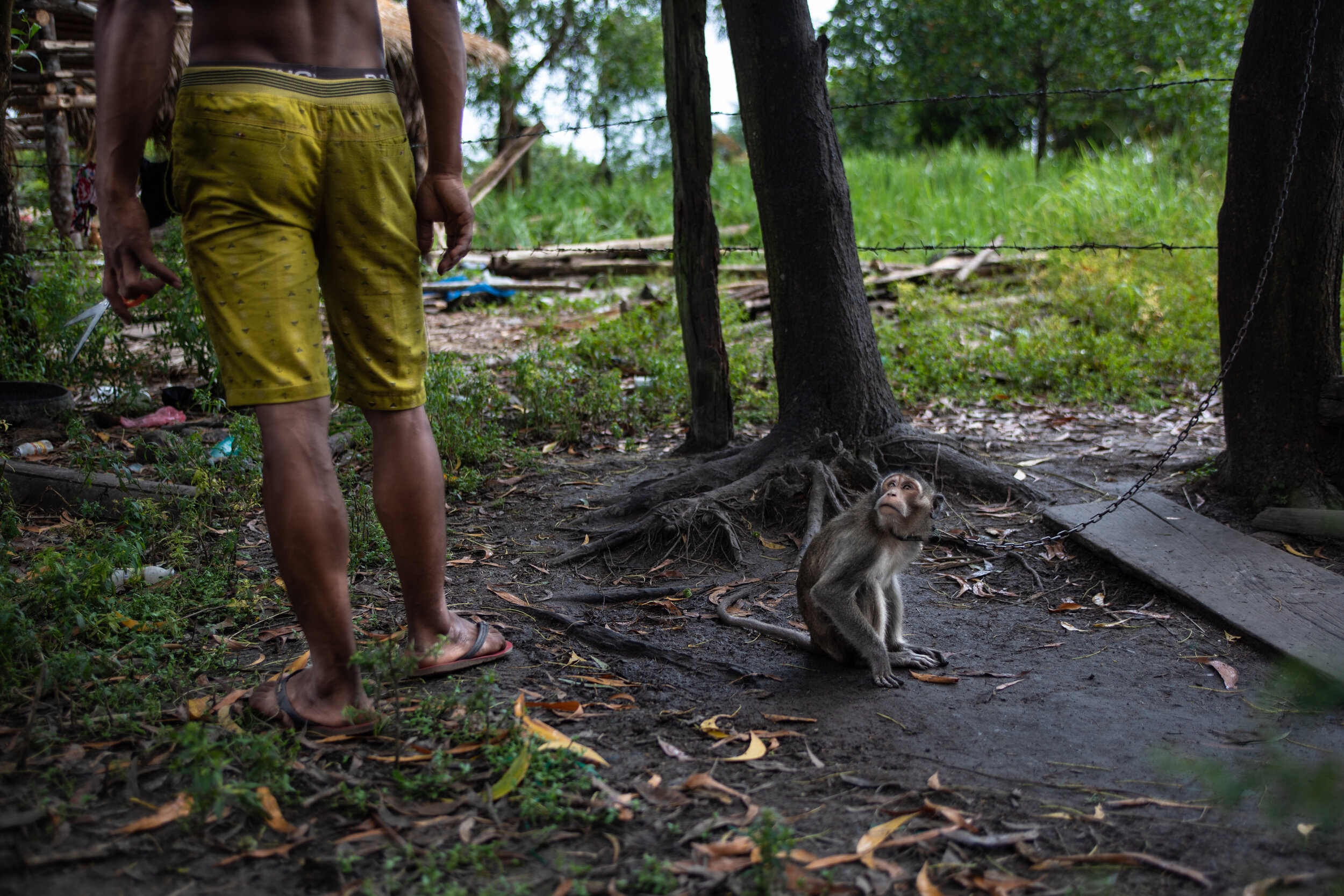
An illegal pet macaque looks at its captor just before being released from the chain where it had lived for the last 8 years. Dealing with illegal pet wildlife is difficult, it requires training, equipment, and resources that aren’t readily available to the rangers.
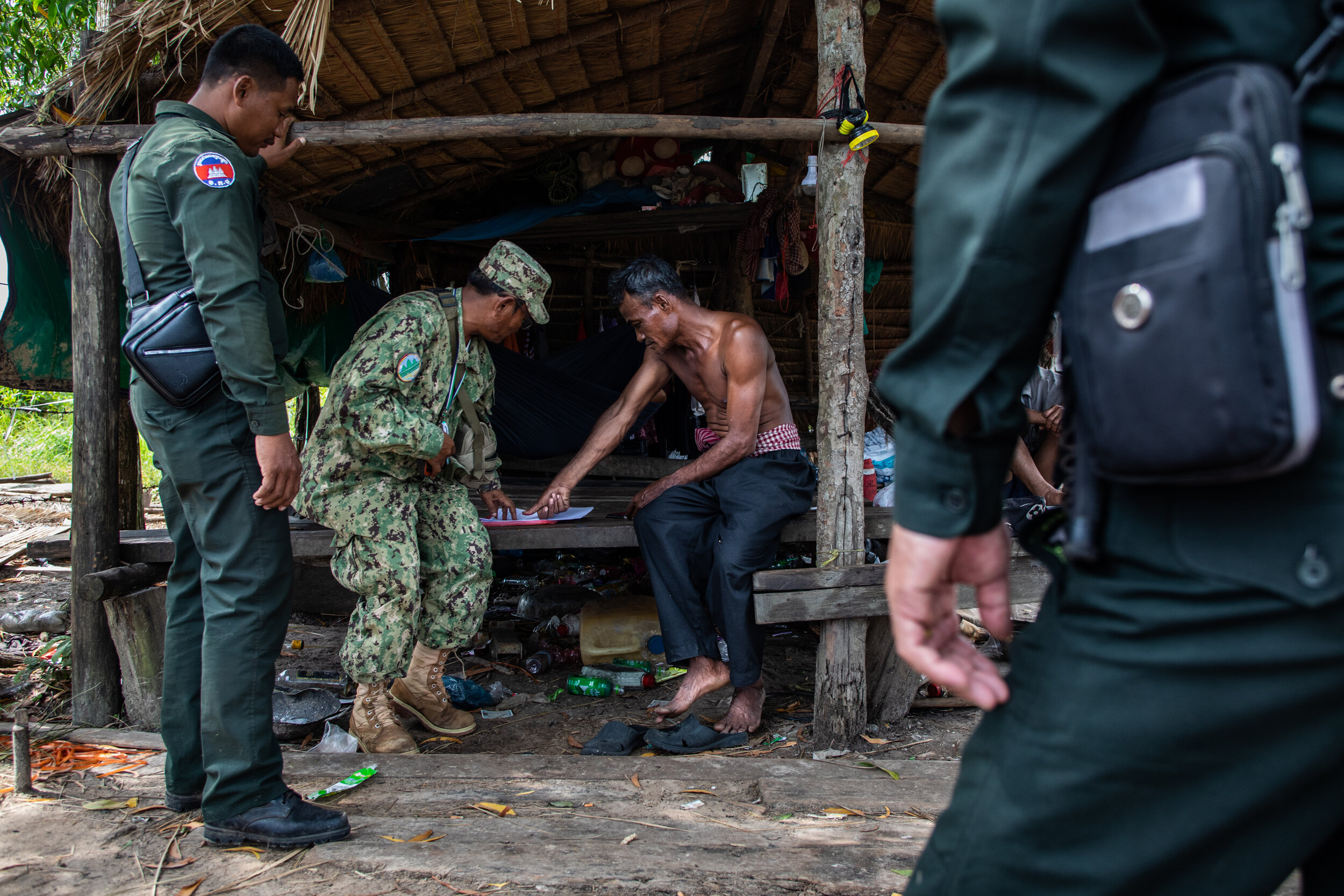
An offender caught with an illegal pet macaque, illegal lumber, and illegal charcoal at his homestead, thumbprints a contract that will allow the rangers to arrest him immediately if he is caught with illegal goods again.
This contract is not ideal. Typically rangers would arrest an offender on the spot for this degree of crime. However because his home was close to the main village the rangers feared violent protest from the community if they made an arrest attempt. In a matter of minutes after the patrol arrived, villagers began to gather and check on the situation. This type of community resistance is common for Wildlife Alliance rangers and adds another danger to the long list of risks they face.
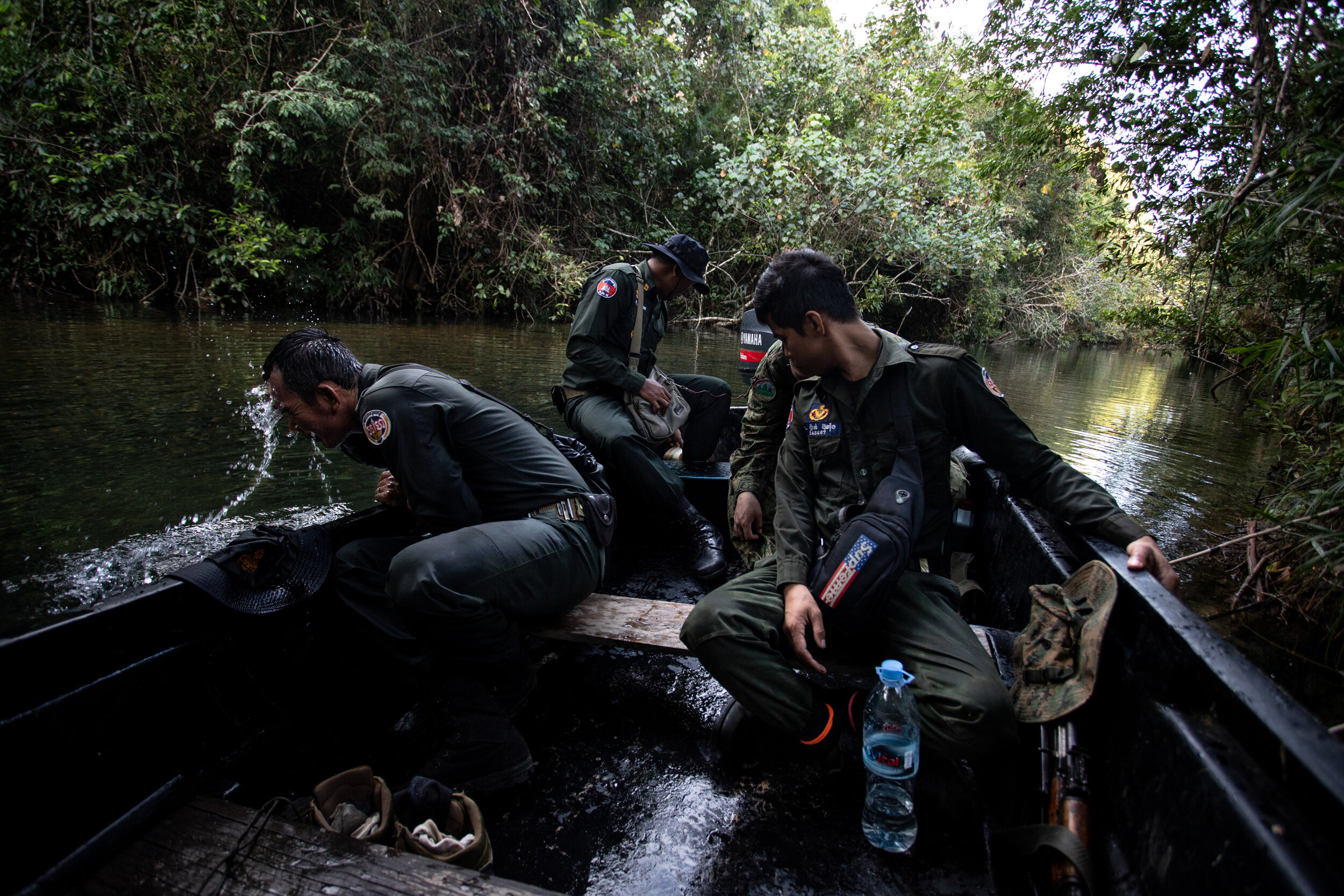
Rangers rest and wash up just after getting back to their boat after tough day patrol trekking off trail for illegal loggers in the Cardamom Forest of Cambodia.
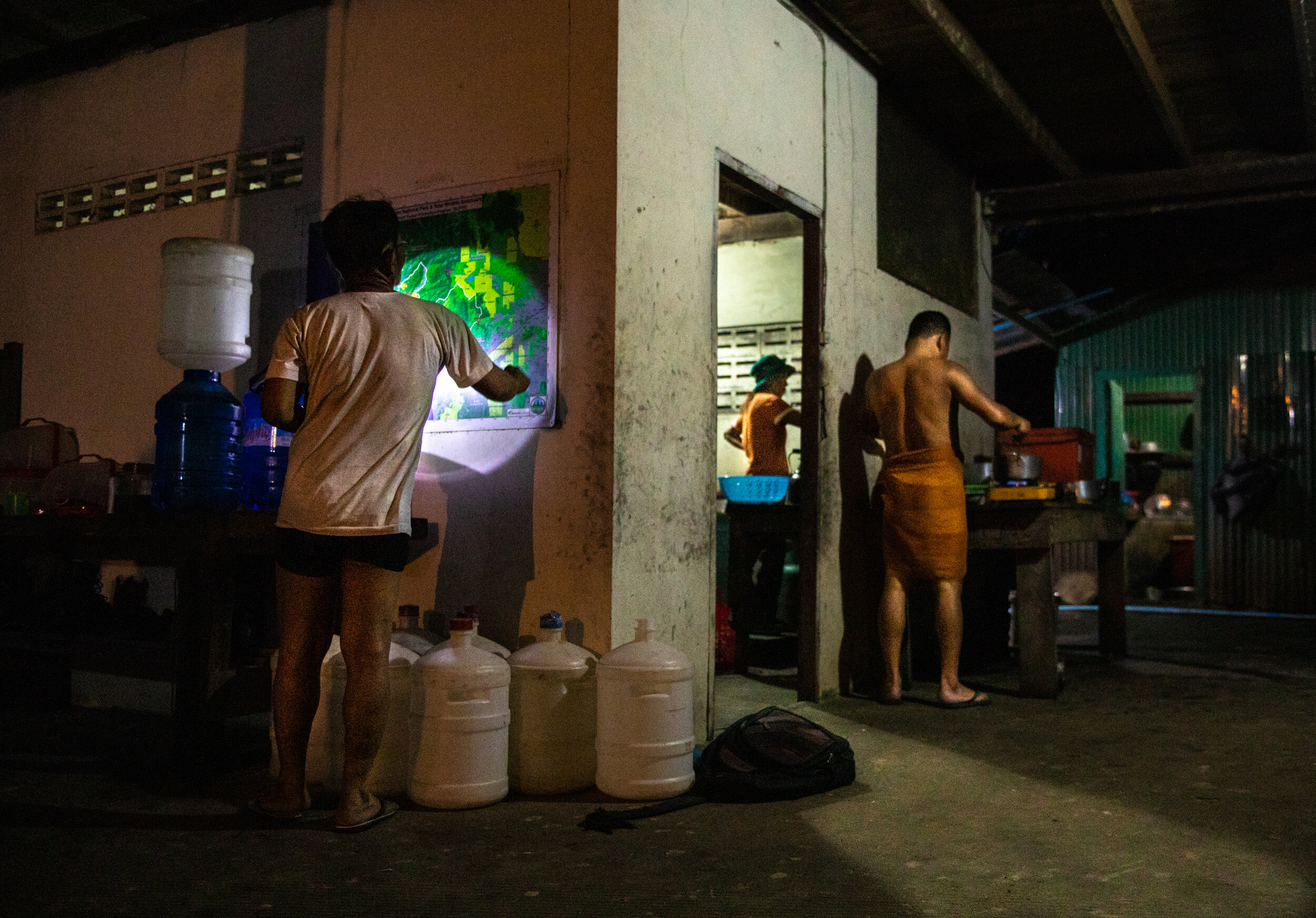
At Stung Proat Station, Wildlife Alliance rangers cook dinner and check the map of Cardamom region to prepare for the next day’s patrol.
Teams of rangers stay at posts such as this station in week long shifts, sleeping, cooking, cleaning, and patrolling together.
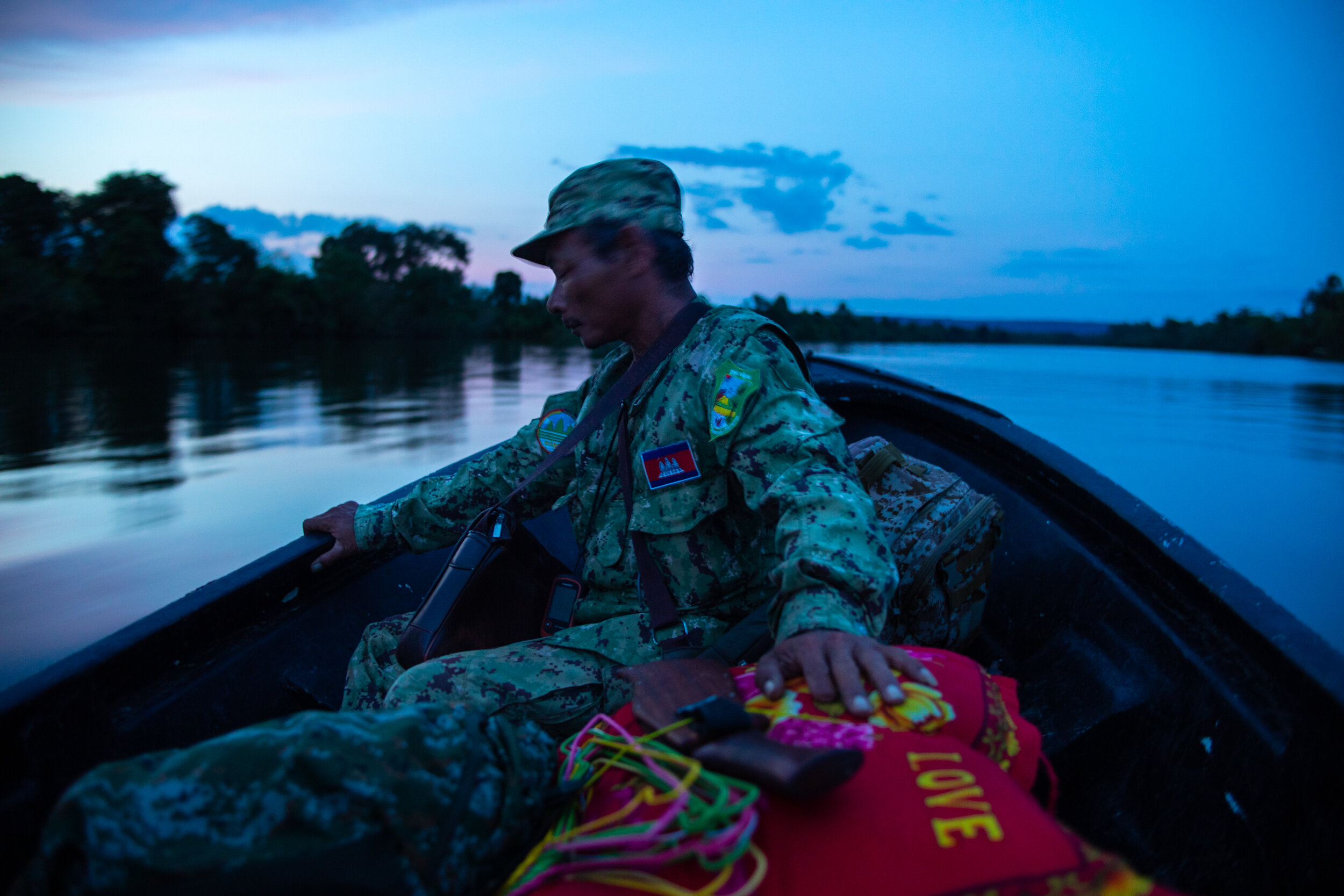
Kim Savun, 54, heads to his post for the night, located in the town of Chi Phat. There is a ranger at each check-point outpost 24/7 to stop anyone suspicious who might be attempting to illegally move wildlife or lumber.
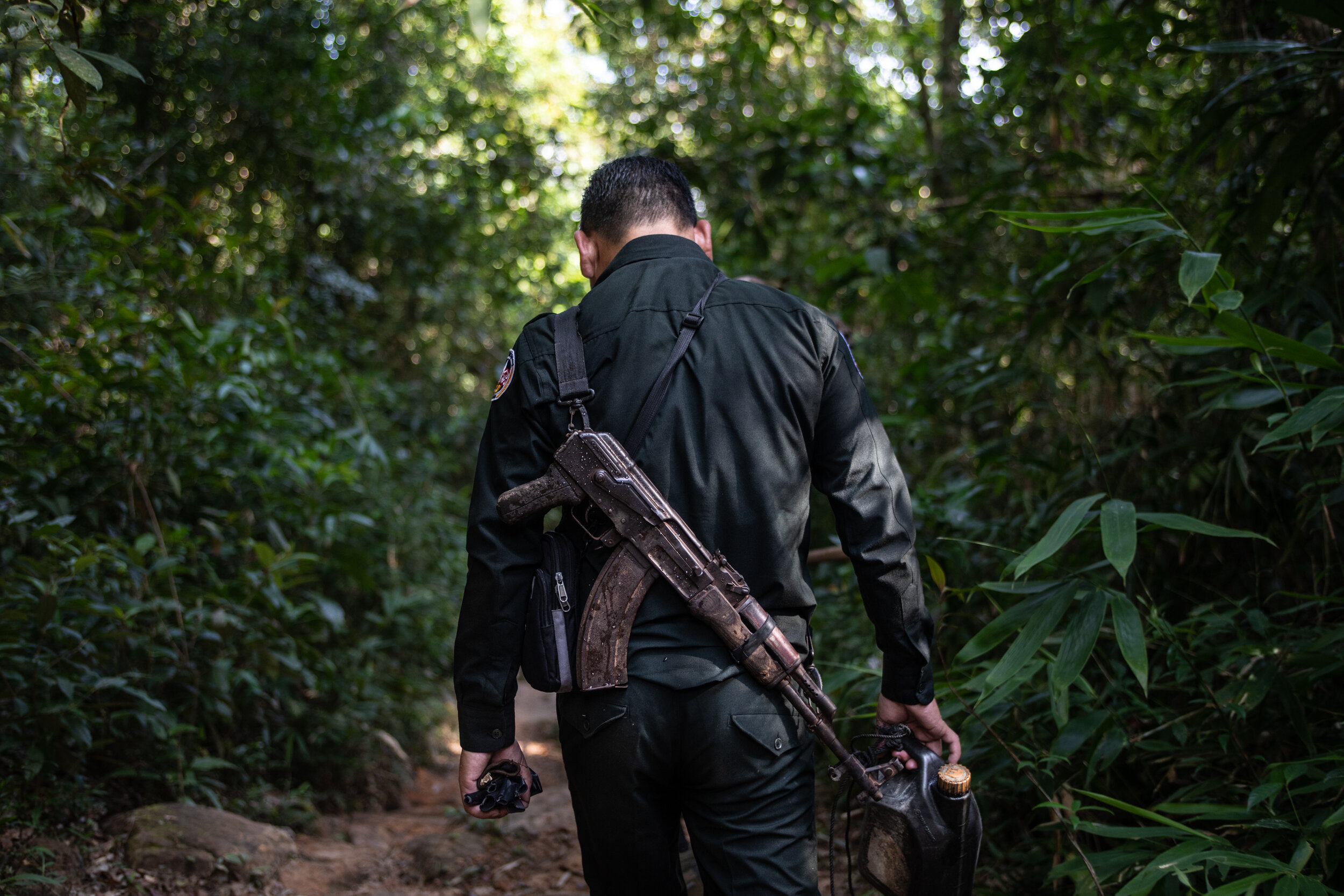
Pan Raksmey, 44, heads back to the station after a foot patrol in the Cardamom Forest.
Due to the vast amount of protected area to patrol and lack of resources, Wildlife Alliance rangers spend three weeks out of every month in the field, leaving only a week to spend at home with their families.
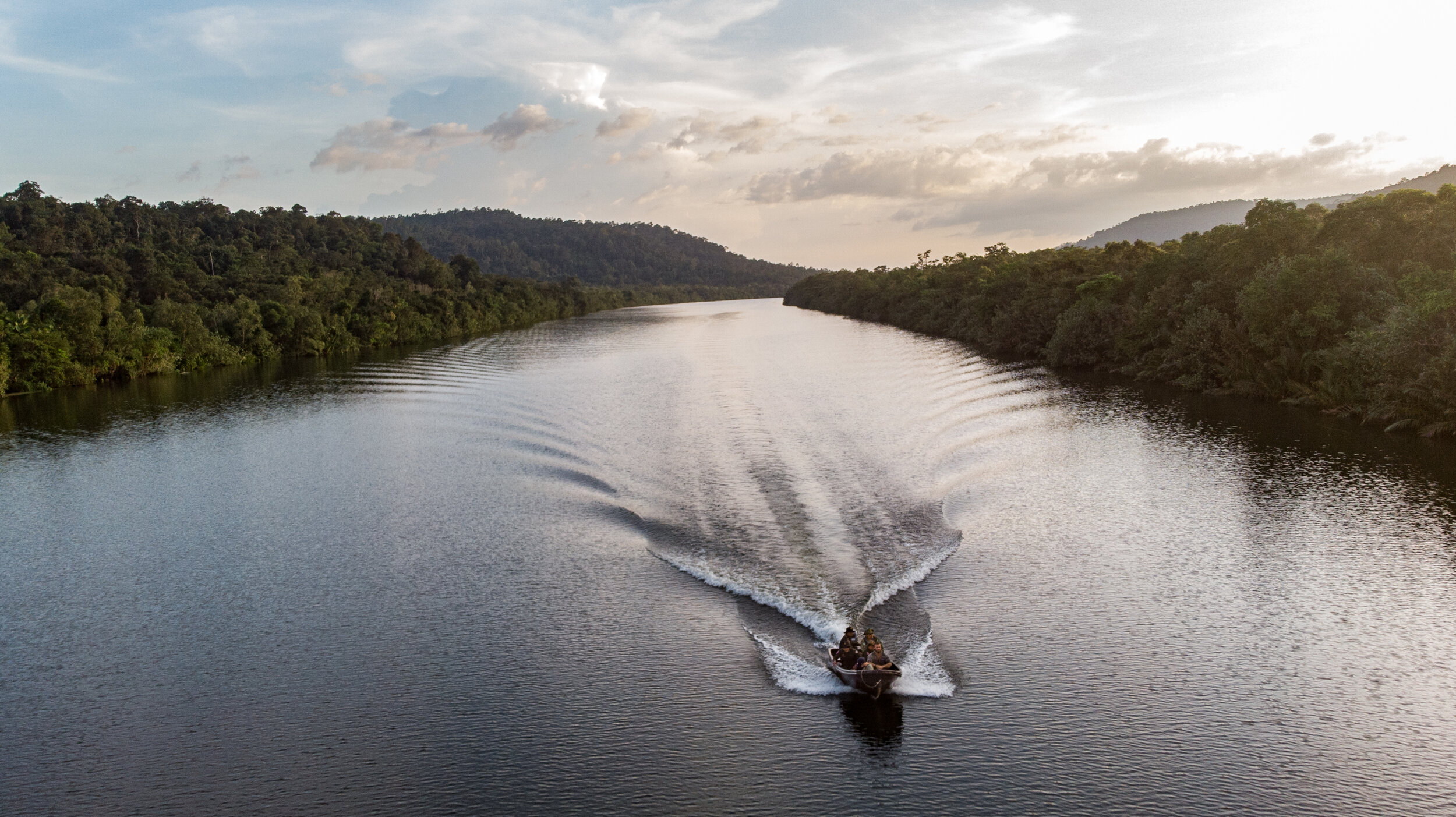
A Wildlife Alliance ranger patrol on the Preak Piphot River. These rangers are the first line of defense against some of the greatest threats to Cambodia’s biodiversity today.
They are working to protect 1 million hectares (2,471,053 acres) (10,000 km2) of dense monsoon forests of the Cardamom Rainforest Landscape, a crucial habitat for thousands of species of fauna and flora.
DOCUMENTING THE FRONT LINES OF CONSERVATION
My mission is to tell the stories of those who dedicate their lives to protecting the last great nature sanctuaries on earth against the ever increasing threat of poaching, wildlife trade, and deforestation. My goal is join these men and women in the field to help shed light on the sacrifices and challenges they face in their pursuit to protect these lands.
TOTAL AREA COVERED:
“BY FOOT:
26km ”
“BY MOTORBIKE:
145km”
“BY BOAT:
60km”
“BY TRUCK:
520km”
